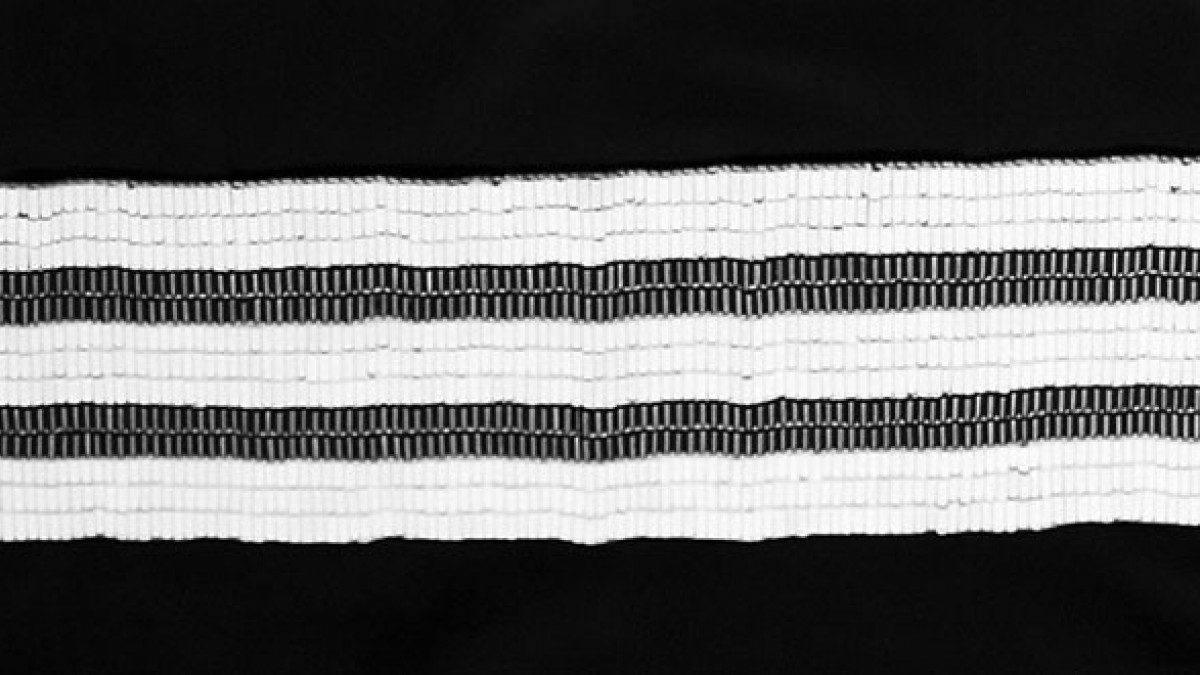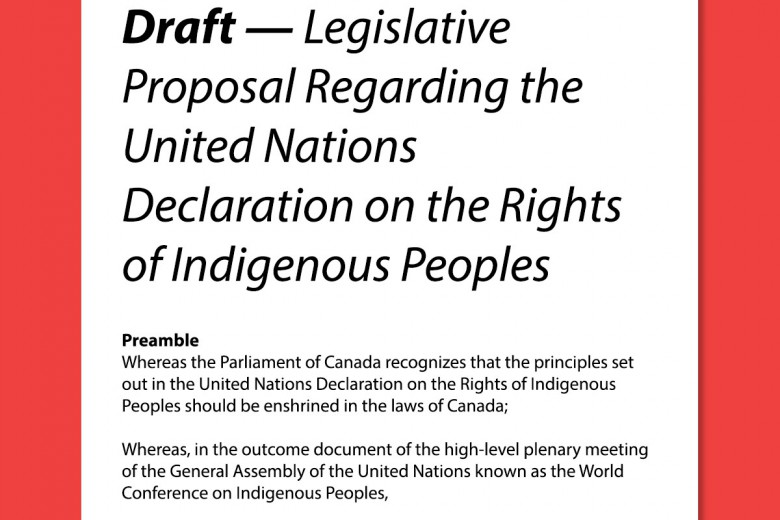The Two Row Wampum is one of the oldest treaty relationships between the Onkwehonweh (original people) of Turtle Island (North America) and European immigrants. The treaty was made in 1613 between the Dutch and the Haudenosaunee (Iroquois) as Dutch traders and settlers moved up the Hudson River into Kanien’kehá:ka (Mohawk) territory. The Dutch initially proposed a patriarchal relationship with themselves as fathers and the Haudenosaunee people as children. According to Kanien’kehá:ka historian Ray Fadden, the Haudenosaunee rejected this notion and instead proposed:
“We will not be like Father and Son, but like Brothers. [Our treaties] symbolize two paths or two vessels, travelling down the same river together. One, a birchbark canoe, will be for the Indian People, their laws, their customs, and their ways. The other, a ship, will be for the white people and their laws, their customs, and their ways. We shall each travel the river together, side by side, but in our own boat. Neither of us will make compulsory laws nor interfere in the internal affairs of the other. Neither of us will try to steer the other’s vessel.”
Well aware of the political and military strength of the Haudenosaunee Confederacy (which included the Kanien’kehá:ka), the Dutch agreed with the principles of the Two Row. As was their custom for recording events of significance, the Haudenosaunee created a wampum belt out of purple and white quahog shells to commemorate the agreement. John Borrows, an Indigenous legal scholar and the author of Canada’s Indigenous Constitution, describes the physical nature of the Two Row Wampum as follows:
“The belt consists of two rows of purple wampum beads on a white background. Three rows of white beads symbolizing peace, friendship, and respect separate the two purple rows. The two purple rows symbolize two paths or two vessels travelling down the same river. One row symbolizes the Haudenosaunee people with their law and customs, while the other row symbolizes European laws and customs. As nations move together side-by-side on the River of Life, they are to avoid overlapping or interfering with one another.”
The Two Row Wampum treaty made with the Dutch became the basis for all future Haudenosaunee relationships with European powers. The principles of the Two Row were consistently restated by Haudenosaunee spokespeople and were extended to relationships with the French, British, and Americans under the framework of the Silver Covenant Chain agreements. It was understood by the Haudenosaunee that the Two Row agreement would last forever, that is, “as long as the grass is green, as long as the water flows downhill, and as long as the sun rises in the east and sets in the west.”
While 2013 marked the 400th anniversary of the introduction of the Two Row to Europeans, it is important to note that the concept of the Two Row, based on reciprocal relationships of peace, friendship, and respect, has a much deeper meaning to the Haudenosaunee.
The Two Row is a foundational philosophical principle, a universal relationship of non-domination, balance, and harmony between different forces. The Two Row principles of peace, respect, and friendship can exist within any relationship between autonomous beings working in concert. These include nation-to-nation relationships, dynamics between lovers and partners, and the relationship between human beings and our environment.
While the Two Row Wampum was created to commemorate the introduction of the Dutch to the continent and is derived from Haudenosaunee traditions and philosophy, it is also consistent with the outlooks of many other Indigenous peoples seeking to accommodate themselves to the sudden arrival of Europeans on Turtle Island. Almost universally, Indigenous peoples extended their hands in peace and friendship to the settlers on their lands and sought to improve their lives through trade and exchange with the newcomers. But at the same time, Indigenous peoples were intent on maintaining their own ways of life.
The Two Row can function as a framework for decolonization right across Turtle Island, since holding true to the Two Row means supporting the right of Onkwehonweh people to maintain themselves on their own land bases according to their own systems of self-governance, organization, and economics. (Rather than being driven by profitability and production for markets, most traditional Indigenous economies were based upon localized subsistence.)
In this framework people do not own land but belong to the land as a part of creation and they safeguard it on behalf of coming generations. Before European contact, resources and wealth were shared in most Indigenous societies, and production was geared toward meeting human needs rather than the manufacture of commodities to be bought and sold on the market.
The Two Row Wampum remains a treaty relationship that Haudenosaunee and other Indigenous nations defend today, even if the Canadian state has failed to uphold the principles of the treaties it inherited from the British Crown. We should not be surprised that the British Crown and the colonial Canadian state have been unwilling to respect the self-determination of Indigenous peoples or to uphold the Two Row Wampum. Still, non-Indigenous people can learn this history and inform others about the original framework based on genuine peace, respect, and friendship with Indigenous peoples.
With the rise of a new cycle of Indigenous struggles, and with the global crisis of capitalism intensifying, the recent 400th anniversary of the Two Row Wampum is a good moment for us to start redefining the relationship between Indigenous and non-Indigenous peoples.
Article abridged and adapted from the Two Row Times.




_780_520_90_s_c1_c_c.jpg)


